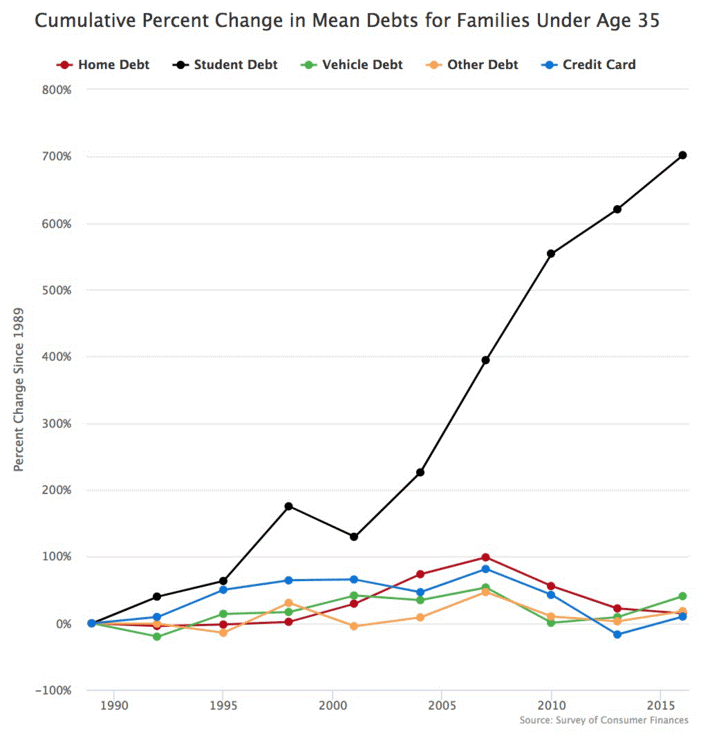
…But ’tis a common proof,
That lowliness is young ambition’s ladder,
Whereto the climber-upward turns his face;
But when he once attains the upmost round.
He then unto the ladder turns his back,
Looks in the clouds, scorning the base degrees
By which he did ascend. So Caesar may.
Then, lest he may, prevent. And, since the quarrel
Will bear no colour for the thing he is,
Fashion it thus; that what he is, augmented,
Would run to these and these extremities:
And therefore think him as a serpent’s egg…
-Brutus, Act II Scene I, Julius Caesar
Our government is plagued by polarization, gridlock, and special interest capture which — combined with an overgrown administrative state and poor policy in many sectors — stall economic mobility and meaningful social progress. In this atmosphere, it’s intellectually tempting for policy thinkers to seize the reins of government and dictate technocratic solutions from the helm. Indeed, a virulent strain of top-down thinking has infected our nation’s capital. But the marketplace of ideas cannot function if constrained to legislators, regulators, and the small cluster of think tanks in their orbit.
It’s a tautology that any government action is top-down, but if it’s agreed that government is going to be involved in an industry, the highest and most effective role of government in a free society is to enable bottom-up, entrepreneurial innovation to solve the issues at hand. Rather than dictate how a sector should be run top-down, our policy goals should include creating frameworks that give entrepreneurs aligned incentives and maximal flexibility to experiment to achieve the agreed upon ends. Academics and policy makers do not have a monopoly on clever ideas and good judgment. They must abandon their hubris and instead champion policy frameworks that inspire and enable entrepreneurial individuals everywhere to improve education, healthcare, criminal justice, and other areas of society.
Although we support academic freedom, AEI’s role is to promote a certain set of values and we humbly suggest that it is the role of the board to remind its scholars of these values from time to time.
By way of example, a popular candidate for policy reform is America’s higher education system. Many colleges and universities are not preparing students for the workforce, as evidenced by the 2.5 million STEM jobs that will go unfilled in 2018. [1] 400,000 Associates of Arts students a year graduate from arts and identity studies programs with minimal prospects for either a job or a bachelor’s degree. Other reports find that many employers are unable to fill jobs because students are being steered into bachelor’s degrees instead of trade schools.[2][3] Meanwhile, 8 million Americans are currently in default on their student loans, and total student loan debt has reached a dizzying $1.4 trillion.[4][5]

Untethered subsidies to higher education institutions ruled over by a large centralized bureaucracy are a failed experiment in Soviet-style economics. Regulatory restrictions on which programs qualify for accreditation chill experimentation with apprenticeships, competency-based education programs, and other kinds of skills-based pedagogies. Instead, approaches that take into account the values and lessons of free enterprise would tie funding to specific quantitative goals such as higher average salaries over the years after college or higher percent employment rates. These metrics would incentivize entrepreneurs to innovate, compete, and profit when they succeed, or lose when they fail. The greater the aligned profit opportunity, the greater our success will be at making students successful.
There are many areas for values-aligned scholars to disagree and innovate. If the Federal government is going to spend money on education, perhaps it should grant money to state governments to experiment with rewarding schools for pioneering new techniques that successfully prepare their students for the workforce. An intelligent policy that solders school revenues to real student outcomes would allow creative new ideas to filter into our education system, first through vocational schools and then through traditional forms of higher education.
For decades the American Enterprise Institute has proudly advanced the ideals of free enterprise and a “pluralistic, entrepreneurial culture.” At the heart of the AEI’s commitment to enterprise is the understanding that great ideas come from unexpected places. Enterprise thrives in a system where truly innovative products go viral, and visionary entrepreneurs are rewarded for their unique contributions to human life. Competitive markets are an effective sieve for groundbreaking insights because they are open to all comers and generate ideas from the bottom-up.

AEI is rightfully admired for drafting sound policy suggestions across most facets of American government — producing genuinely bottom-up reform proposals across various policy areas, not just in education but also in healthcare, where AEI scholars have expounded value-based, preventive models that would deliver cheaper, higher quality health services to Americans.[6]Unfortunately, we are beginning to see symptoms of top-down thinking in AEI scholarship. This bias is most apparent in the AEI coverage of criminal justice reform, which seems to have fully surrendered to the Soviet mindset and makes technocratic judgments about which rehabilitation techniques to employ rather than advocating a systemic overhaul that aligns enterprise profits with developing creative solutions to recidivism from the bottom up.[7] [8] [9] But AEI’s scholarship on higher education has also displayed an anti-market drift.
At their best, AEI’s papers on higher education recommend bottom-up innovation and competition by holding schools directly accountable for preparing students for the workforce.[10] But in a recent series, several AEI scholars argue that the federal government should tie funding to student completion rates.[11][12] This is a shortsighted, top-down strategy for mending our higher education system. Incentivizing colleges and universities to graduate as many students as possible turns schools into degree mills, corroding the value of the college degree as a signaling mechanism. As noted, degree completion often bears no relation to a student’s prospects for a successful career after graduation.[13] This suggestion is not merely questionable policy; it goes entirely against the values and principles of AEI. The authors should be reminded to consider why liberty and free enterprise work and are a key part of our values.
These are minor examples, but working from the heart of DC, it’s very tempting to go along with the status quo and start prescribing top-down solutions. Emphasis on arbitrary intermediate metrics rather than ultimate social ends is characteristic of top-down policy thinking and inconsistent with the modest, democratic spirit of free enterprise. The leaders on the board of the American Enterprise Institute must take a stand for the values of enterprise and liberty and make sure that AEI scholars are advancing the Institute’s founding principles. Education in America will continue to be suboptimal until it embraces the principles of liberty and open innovation. The only major education reforms worth supporting are those that harness our shared values, such as frameworks that enable entrepreneurial teachers to compete, experiment, and innovate to better prepare students to succeed in the labor market — scaling the ideas that work and eliminating the schools that do not.
In translating these values into concrete policy, AEI researchers have much to explore and map out. Instead of a traditional income sharing agreement — which lends money to an individual student — the federal government could directly fund educational institutions themselves, for instance, and easily match existing IRS data on per-student educational program spending with the future salaries of students. Schools that produce high-earning graduates could then be allowed to take more students on government loans. There are many new ways for markets to work here.
Injecting entrepreneurial energy into a space is always superior to regulating it from above. While initial school credentialing is inescapable, it should be permissive. Educational institutions themselves should be the ultimate arbiters of which programs receive grant funding, not distant bureaucrats. Of course, colleges and universities will naturally be incentivized to cherry-pick the best students. Federal grants could adjust to reflect quantitative assessments of students’ parents’ salaries in order to create opportunity for the socio-economically challenged in a market-driven way. One course of study for AEI scholars is to consider how exactly to construct the rewards scale for different students. It may take several years to determine if a graduate will attain a high salary in the workforce, but as long as the reform doesn’t become a political football, the federal government and financial markets can disintermediate risks over medium timeframes.
Enabling entrepreneurial solutions instead of top-down techniques doesn’t mean that scholars can’t suggest ideas or give examples of what entrepreneurs might do — they just can’t prescribe exact implementation methods. In this new, competitive system, colleges and universities could try out various approaches such as:
Addressing quantified skills gaps by focusing on professions such as vocational nursing, K-12 education, and construction — and teaching work-ready skills.
Partnering with large corporations in need of new recruits; using industry certification programs to communicate with potential employers instead of traditional credentials; developing databases of regional businesses and their hiring needs. [14] Most mid-to-large companies would love dedicated recruiting programs, but do not currently have them.
Offering classes in the evenings when continuing-education students such as single moms and full time workers can actually attend them. Today, 30% of undergraduates in America are over the age of 25, and 25% of full-time college students are also working full-time.[15]
Tinkering with the ratio of online educational material to focused physical classroom time or 1-on-1 mentorship sessions; conducting prior learning assessments; concentrating classes into 8-week vs. 16-week terms and seeing what gets results and is profitable for all involved.
Rather than deciding exactly how the industry is going to work, enlightened scholarship will instead recommend a framework that allows schools to independently test which of these strategies work for them, with competition in the marketplace determining what scales. The best solutions for particular student demographics and geographical regions will vary, and the blend of techniques employed by a school will have to fluctuate in real-time in response to changing labor market conditions. A bottom-up, experimental approach is the only way to calibrate curricula to regional idiosyncrasies.
We hope that in the coming years the American Enterprise Institute will maintain their tradition of excellence and generate many other bottom-up, market-driven proposals for reforming higher education and other policy areas. The question is how to set a simple long-term goal, such as student career growth as measured by salary, improved health outcomes, or lower recidivism rates, and unshackle entrepreneurs to compete and innovate towards better solutions. In all domains, leading policy advisors should pair bold systems-thinking with intellectual modesty, and craft policies which embrace unforeseen nuance and local wisdom.
When our scholars eschew enterprise-driven frameworks we should consider reminding them what AEI stands for, and why. When profit incentives are aligned towards appropriate goals, the innovative spirit of free enterprise will always be better at solving complex social problems than edicts from on high.
[1] Smith, Lamar. “To fill STEM jobs, federal programs need to focus on results.” Committee on Science, Space, & Technology. December 20, 2017.
[2] Schneider, Mark and Matthew Sigelman. “Saving the Associate of Arts Degree.” AEI,
[3] McCarthy, Pat. “Leading Practices for the State’s Secondary Career and Technical Education Programs.” Office of the Washington State Auditor. December 19, 2017.
[4] https://studentaid.ed.gov/sa/about/data-center/student/portfolio
[5] Levitz, Eric. “We Must Cancel Everyone’s Student Debt, for the Economy’s Sake.” New York Magazine, February 9, 2018.
[6] Capretta, James and Lanhee Chen. “Yes, there’s hope for health care reform.” AEI, August 31, 2018.
[7] Streeter, Ryan and Brent Orrell. “Time to Set Politics Aside to Move Ahead on Criminal Justice Reform.” AEI, June 6, 2018.
[8] Duwe, Grant. “The effectiveness of education and employment programming for prisoners.” AEI, May 2018.
[9] Robinson, Gerard and Elizabeth English. “Give Prisoners a Second Chance.” AEI, October 18, 2016.
[10] We were excited to see Naomi Schaefer Riley defend this position in an extremely recent piece, see: Riley, Naomi. “Time for Colleges to Get Some Skin in the Game.” City Journal, September 11, 2018.
[11] Schneider, Mark and Kim Clark. “Completion Reforms That Work.” AEI, May 2018.
[12] Turner, Sarah. “The Policy Imperative: Policy Tools Should Create Incentives for College Completion.” American Enterprise Institute, May 2018.
[13] AEI scholar Sarah Turner briefly contemplates tying federal dollars to default rates on student loans, but worries that default rates are a lagging indicator. In our view, default rates are clearly a superior metric to degree completion. However the best metric is future salary, which is the real, if implicit, outcome at which American higher education aims.
[14] Monroe Community College in Rochester, NY has begun using this database model. See: Alvarez, Joshua. “The Twelve Most Innovative Colleges for Adult Learners.” Washington Monthly, October 2017.
[15] Kelly, ibid.

